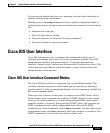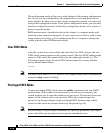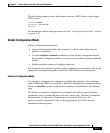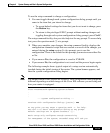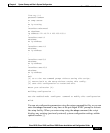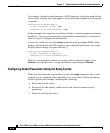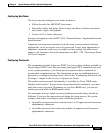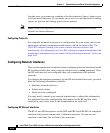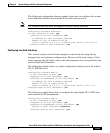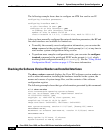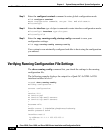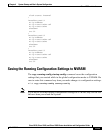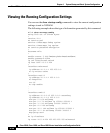
4-23
Cisco 12010, Cisco 12410, and Cisco 12810 Router Installation and Configuration Guide
OL-11496-01
Chapter 4 System Startup and Basic System Configuration
Cisco IOS User Interface
Configuring Host Name
The host name you configure your router with must:
• Follow the rules for ARPANET host names.
• Start with a letter, end with a letter or digit, and have as interior characters
only letters, digits, and hyphens.
• Consist of 63 or fewer characters.
For more information, refer to RFC 1035, “Domain Names—Implementation and
Specifications.”
Uppercase and lowercase characters look the same to many internet software
applications, so do not expect case to be preserved. It may seem appropriate to
capitalize a name the same way you might do when writing, but names must
appear as all lowercase. For more information, see RFC 1178, “Choosing a Name
for Your Computer.”
Configuring Passwords
The commands available at the user EXEC level are a subset of those available at
the privileged EXEC level. Because many privileged EXEC commands are used
to set system parameters, you should password-protect these commands to
prevent their unauthorized use. For information on how to establish password
protection or configure privilege levels, refer to the “Configuring Passwords and
Privileges” chapter in the Security Configuration Guide.
The enable secret password functionality is available for Cisco 12000 series
Gigabit switch routers. To gain access to privileged-level commands, you must
enter the correct password. Depending on your boot ROM level, you can use
enable password while in ROM monitor mode.
For maximum security, enable secret and enable password settings should be
different. If you use the same password during the setup process, the system
accepts it but issues a warning to enter a different password.
• An enable secret password can contain from 1 to 25 uppercase and lowercase
alphanumeric characters.
• An enable password can contain any number of uppercase and lowercase
alphanumeric characters.



